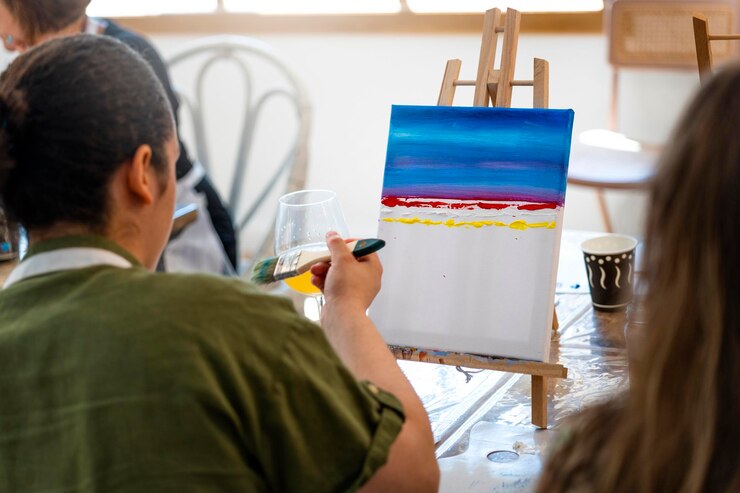Being a painter or visual artist is not just about creating art—it also involves managing finances wisely to secure a stable and sustainable artistic future. While revenue from art sales is a vital part of your income, relying solely on it can be risky due to market fluctuations and unpredictable demand. Read More
Diversifying Income Streams
- Art Sales and Commissions: Generate income through selling original artworks, limited edition prints, or commissioned pieces. Participate in art exhibitions, fairs, and online platforms to reach a broader audience and increase sales opportunities.
- Teaching and Workshops: Offer art classes, workshops, or private lessons to share your skills and expertise with aspiring artists. Teaching can provide a steady income stream while allowing you to contribute to the artistic community.
- Licensing and Merchandising: Explore opportunities to license your artwork for use on products such as prints, merchandise, apparel, or home decor. Licensing agreements can generate passive income through royalties.
- Freelance and Contract Work: Freelance as an illustrator, graphic designer, muralist, or storyboard artist for businesses, publications, or advertising agencies. Freelancing allows flexibility and additional income opportunities outside traditional art sales.
Financial Tips for Artists
- Create a Budget and Financial Plan: Develop a budget that includes both personal and business expenses. Track income, expenses, and savings goals to manage cash flow effectively and plan for future investments.
- Build an Emergency Fund: Establish an emergency savings fund to cover unexpected expenses or income fluctuations. Aim to save at least three to six months’ worth of living expenses to provide financial stability during lean periods.
- Invest in Professional Development: Allocate funds for ongoing education, workshops, or art courses to enhance your artistic skills and stay competitive in the art market. Continuous learning improves your craft and expands career opportunities.
- Diversify Investments: Beyond art sales, consider investing in diversified assets such as stocks, bonds, mutual funds, or real estate. Consult with a financial advisor to develop an investment strategy aligned with your risk tolerance and long-term financial goals.
- Protect Your Art and Intellectual Property: Understand copyright laws and intellectual property rights to safeguard your artworks from unauthorized use or reproduction. Consider registering copyrights for your original creations to enforce legal protection.
Planning for Long-Term Financial Security
- Retirement Planning: Start planning for retirement early by contributing to retirement accounts such as IRAs (Individual Retirement Accounts) or 401(k) plans. Explore options for self-employed individuals or freelancers to maximize tax advantages and savings.
- Healthcare and Insurance: Prioritize health insurance coverage and consider disability insurance to protect against unexpected medical expenses or loss of income due to illness or injury. Review insurance options tailored to self-employed artists or small business owners.
- Estate Planning: Develop an estate plan to outline how your assets, including artworks and intellectual property rights, will be managed and distributed in the future. Consult with an estate planning attorney to draft a will, establish trusts, or designate beneficiaries.
Bottom Line
Investing in your artistic future involves more than creating compelling artworks—it requires strategic financial planning, diversifying income streams, and making informed investments to achieve long-term financial security. By implementing these financial tips for painters and visual artists, you can navigate the challenges of a creative career while building a stable foundation for your artistic journey. Whether through art sales, teaching, freelancing, or diversified investments, proactive financial management empowers artists to thrive creatively and financially in a dynamic and competitive art market landscape.

